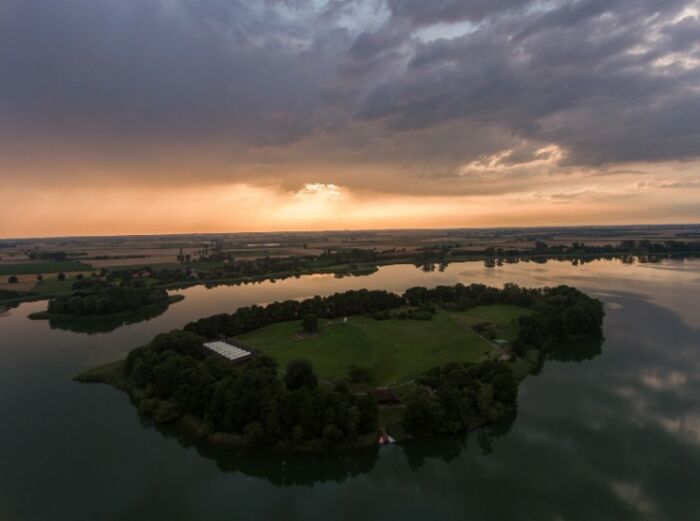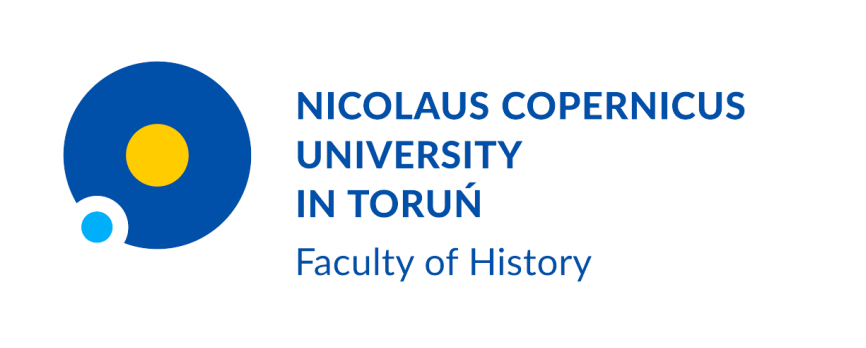The project focused on researching the archaeological heritage of Lake Lednica, which is the primary mission of the Centre for Underwater Archaeology at Nicolaus Copernicus University. It is also the longest-running archaeological project in Poland, having been conducted continuously since 1982.
Funding
2017 – The project "Kolebka Piastów — archeologiczne prospekcje podwodne w rejonie jeziora Lednickiego" was funded by the Ministry of Culture and National Heritage as part of the Cultural Heritage program, priority: Protection of Archaeological Monuments.
2018–2024 – Research was funded by the Muzeum Pierwszych Piastów na Lednicy.
Project Leader: Andrzej Pydyn
Team Members: Mateusz Popek, Konrad Lewek, Szymon Mosakowski, Piotr Majchrzak, Michał Gliszczyński, Paweł Stencel (archaeology students from Nicolaus Copernicus University and volunteers)
In cooperation with: Museum of the First Piasts at Lednica
Ostrów Lednicki: Archaeology
Situated on Lake Lednica, Ostrów Lednicki island, along with its early medieval settlement complex, is one of Poland's most significant archaeological sites. Excavations began in the mid-19th century and have continued to this day. It is also undoubtedly one of the country's most important underwater archaeological sites.
Since 1982, continuous underwater archaeological research has been conducted at Lake Lednica by a team from Nicolaus Copernicus University in Toruń, currently represented by the Centre for Underwater Archaeology. Nearly forty years of underwater exploration have resulted in the detailed analysis of two early medieval bridges, seven dugout canoes, the most extensive collection of early medieval military artifacts in Central Europe, and a rich assemblage of other archaeological finds. Notably, each year, the research yields new and significant discoveries.
The most important archaeological feature is the residential and administrative complex in the central part of the lake on Ostrów Lednicki. In the late 9th or early 10th century, a fortified stronghold was built on the island's southern part. In the second half of the 10th century, a palace was constructed within the expanded stronghold. This undertaking is directly associated with Mieszko I, Poland's first historically known ruler, and likely coincides with the construction of the now-famous bridges.
Beyond the stronghold, both on the island and along the lake shore, traces of various craft and trade activities have been uncovered.

Bridges Over a Thousand Years Old (1982–2016)
Remains of two bridges discovered in the 1950s–60s were named the Poznań Bridge (westward) and the Gniezno Bridge (eastward).
The Gniezno Bridge, connecting the island's centre to the eastern shore, was 187 meters long and reconstructed to be around 5 meters wide. It was built using a trestle construction and underwent several reconstructions. Dendrochronological analysis dates the original construction to the 860s, with subsequent repairs or reconstructions in 976–978, 979–981, 982–1006, 1007–1017, and 1032. Numerous organic artefacts found during excavations have offered insight into various aspects of early medieval life, from agriculture, daily living, fashion, and craftsmanship to warfare.
On the island's opposite side was the Poznań Bridge, approximately 440 meters long and 5 meters wide, leading toward Poznań. Constructed similarly, it dates to 961–963 and was reconstructed in 965–969, 980–981, 995–1004, 1007–1009, 1015–1018, and 1020–1026. The piles in deeper sections (up to 11 m) were more densely packed, reflecting the lake's depth. Made from sessile oak (Quercus petraea), logs ranged from 14–15 meters in length and 12–22 cm in diameter, predominantly from trees aged 21–60.
Weapons on the Lakebed
Extensive research around the bridges and across the lake revealed a substantial collection of early medieval weaponry. Most artifacts were concentrated on the island's northwestern shore. Finds include:
- 141 axes
- 48 spearheads (including three complete spears)
- 7 swords
- A nasal helmet
- A mail
Dugout Canoes
Seven dugout canoes have been discovered in Lake Lednica, three of which date to the early Middle Ages. Two were recovered, while one remains submerged. Made from oak, linden, and poplar, they are all exceptionally long for their type, approximately 10 meters long. These may have been used for transport, military purposes, or as status symbols (Ossowski, 2014).
Rampart Remains (2020–2024)
In 2020, excavations near Mieszko I's palace unexpectedly revealed many wooden construction elements. Initially puzzling, after three seasons of investigation, the findings were identified as the collapsed remains of a defensive rampart. The dendrochronological evidence suggests that this rampart, commissioned by Mieszko I, collapsed shortly after construction. The exact cause of this failure remains unknown.
Archaeology of Ledniczka Island (2017–2021)
Recent discoveries highlight the importance of Ledniczka Island, where a motte-type fortification rises 6 meters above the terrain with a 20-meter-wide flat top. Excavations uncovered remains of three buildings atop the mound. The medieval motte is believed to be linked to the Ostrów, established on the island in the 13th century or relocated there from Ostrów Lednicki in the late 1200s. Written sources and archaeological evidence suggest the site was abandoned between 1471 and 1521. Another theory proposes it was the residence of the Latalski family (Górecki et al., 1996).
Historical accounts from the 19th century and oral histories from the 1980s, especially from a local sculptor from Rybitwy village, suggested the presence of a bridge to Ledniczka and the use of "black oak" from the lake for carving (Pydyn et al., 2018).
These clues inspired the Department of Underwater Archaeology at Nicolaus Copernicus University to search for the bridge in the 1980s and 1990s, though initial diving efforts were unsuccessful. The focus then shifted to the well-known bridges of Ostrów Lednicki.
In 2017, the CUA team finally located the long-lost bridge and carried out four excavation seasons. Dendrochronology revealed two construction phases: one in the early 10th century, making it older than Mieszko I's Bridges and another in the late Middle Ages, tied to the motte's activity. A particularly noteworthy discovery was a richly decorated sword and axe of foreign origin, indicating the high status of their owners.
Underwater research at Lake Lednica is the longest-running archaeological project in Poland, spanning over four decades. While one might think that such an intensively explored area holds no more secrets, recent advances in underwater methodology continue to yield exceptional discoveries and reshape our understanding of the island's past.
Bibliography Books Hilczer-Kurnatowska, Z. et al. (2016) Ostrów Lednicki - rezydencjonalno-stołeczny ośrodek pierwszych Piastów. Kola, A. et al. (2014) Wczesnośredniowieczne mosty przy Ostrowie Lednickim. T. 2, Mosty traktu poznańskiego (wyniki archeologicznych badań podwodnych prowadzonych w latach 1986-2003). Hilczer-Kurnatowska, Z. (2000) Wczesnośredniowieczne mosty przy Ostrowie Lednickim. T. 1, Mosty traktu gnieźnieńskiego. Articles Pydyn, A., Popek, M., Janowski, Ł., Kowalczyk, A., & Żuk, L. (2024). Between water and land : connecting and comparing underwater, terrestrial and airborne remote-sensing techniques. Journal of Archaeological Science: Reports, 53, 1–10. https://doi.org/10.1016/j.jasrep.2024.104386 Pydyn, A., Popek, M., & Lewek, K. (2023). Past from the depths : the results of underwater research on Lednica Lake. W P. Pranke (Red.), Between East and West : studies on the history of memory, commemoration and reception of Medieval culture (T. 5, s. 75–86). Popek, M., Pydyn, A., Lewek, K., & Mosakowski, S. (2023). Islands of secrets : last discoveries in Lednica Lake (Poland). Potopljena Baština, Article 13.
 Szosa Bydgoska 44/48, 87-100 Toruń
Szosa Bydgoska 44/48, 87-100 Toruń